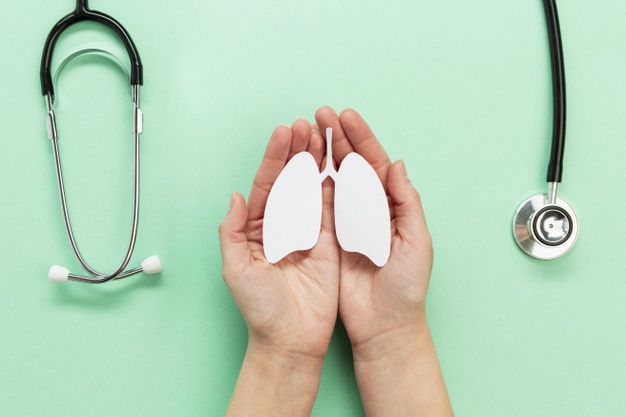Home Oxygen Concentrators: How to Choose the Right One for Your Needs

It is rightly said, “Supply always comes on the heels of demand”. Just as second wave hits India hard, oxygen demands have gone sky high. Such inflation is seen as oxygen is the primary requirement for treatment during covid-19. Oxygen therapy is required mostly in critical and severely ill covid-19 patients whose oxygen levels begin to fall below 95.
Home Oxygen Concentrators: How to Choose the Right One for Your Needs
Know what are you buying
Oxygen Concentrator is an electrical medical device based on pressure swing adsorption (PSA) technology, designed to filter out other gases and provides oxygen without the need of an external oxygen reservoir. It draws air from its surroundings and processes it to concentrated oxygen which can then be delivered to the patient with the help of a nasal cannula or mask. These are portable medical units which can support to a great extent in case of oxygen deficit but might not support much if oxygen level falls below 85%. An efficient oxygen concentrator has multiple ply (molecular sieve) filter system which removes large particles, small particles and bacteria from the air and releases purified therapeutic level oxygen. A reliable and continuous power supply is needed to ensure its proper functioning. Although a few models are available which offer some hours of battery backup.

Features which make it user-friendly:
- Safe
- Cost-effective
- Easy functioning
- Long-lasting filter
- Low noise
- Soft oxygen
- Portable
- Less maintenance
- Continuous operation
- Suitable for domestic use
- Can support two individuals simultaneously
- Convenient alternative to pressurized cylinders
- No transportation required after installation

Additional features offered by different brands include – fault alarms, time scheduling, voice command, remote controlled, smart HD touch display, nebulization, ionization, etc. The most important factors when you are looking for an oxygen concentrator are:
1. PURITY
One of the reasons which is believed to be governing the purity level of oxygen output is the filter or the molecular sieve. It is a crucial marker to be undertaken as better purity improves the oxygen saturation levels in the patient. Any oxygen concentrator which gives less than 90 percent purity at any level of required LPM units is not suitable for covid patients. Users need to check the oxygen concentration offered by the machine before buying.

2. CAPACITY
The two most common and available models of oxygen concentrators offer a flow rate of 5 LPM and 10 LPM. There are a few other models too which offer 3 litres or up to 8 litres per minute. Patients requiring 2-3 LPM oxygen can improve their oxygen saturation levels by prone position which is now widely suggested and practiced as it is an effective means. Moderately ill patients require either 5 or up to 10LPM oxygen to support their oxygen levels.

What not to buy?
- Purity level ranging from as low as 30%. Purity should be above 90% to be able to support a covid patient.
- If oxygen purity percentage falls below 90 when oxygen concentration (LPM) is raised then it is certainly not the suitable equipment for a covid patient.
- Some companies are claiming higher LPM values but the equipment is very less in weight; an effective oxygen concentrator is believed to be 15kgs or above.
| Oxygen concentration & purity levels |
Suitable for home-isolated covid patient |
|
|---|---|---|
| Oxygen Flow rate (in LPM) | 1 – 5 | ✗ |
| 5 -10 | ✓ | |
| Oxygen Purity | >90% | ✗ |
| <90% | ✓ |
Points to remember:
- An oxygen concentrator has no oxygen reservoir of its own and uses ambient air to extract oxygen and purify the air. Nitrogen is released back into the surroundings; therefore, it is essential to allow air exchange in the room by keepings doors and windows open.
- A continuous steady electricity supply is required mostly, therefore, in areas where there is inadequate power supply, oxygen cylinder would be a better option.
- Oxygen coming from a concentrator is not as pure as liquid medical oxygen but is useful for mild to moderate cases where oxygen saturation is above 85%.
- There is risk of cross-contamination when one machine is used for two individuals at the same time.
- Critical patients might require as much as 30-50 litres of oxygen per minute and must be taken to the hospital. Home Oxygen Concentrators are not dependable for critical cases.
- Equipment like humidifiers and nebulisers do not solve the purpose of an oxygen concentrator so beware of scams as due to outrageous demands of oxygen concentrators sellers are trying to misguide.
- Try to buy a brand which is trustworthy and renowned. New local brands might intend to bag money and leave the buyer with an equipment of poor performance.
- There are also pulse concentrators which use a sensor to deliver a puff of oxygen as the user is about to inhale while a continuous flow concentrator delivers oxygen at a constant rate. The latter is considered safer and suitable for most of the conditions. Consulting a physician is advisable before deciding which one to opt for.

The uncontrolled pandemic condition in India and elsewhere, has led to overinflated demands of Home Oxygen Concentrators and there are several brands in the market offering their machines in over-the-top prices. It would therefore be wiser to avoid haste and research a bit before planning to buy this life-saving machine. This article is based on general survey and research in present situation and intends to bring knowledge and awareness to the readers.


1 Comment
Very informative and amazingly written!
A must read for everyone!